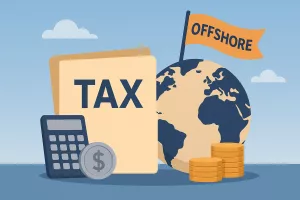Navigating the world of loans can feel a bit overwhelming, especially when you’re faced with terms like “secured” and “unsecured” loans. These aren’t just banking jargon; they have real implications on your financial journey. Whether you’re considering borrowing for a home, a car, or to cover unexpected expenses, understanding these two types of loans is crucial. Let’s dive deeper into what sets them apart and how you can make the best choice for your situation.
Understanding Secured Loans
What Makes a Loan “Secured”?
A secured loan is essentially a loan that is backed by collateral. This means you offer something of value that the lender can take if you fail to pay back the loan. Common forms of collateral include your home, vehicle, or other valuable assets like jewelry or investment accounts. This setup provides the lender with a form of security, significantly impacting the terms of the loan.
Benefits of Secured Loans
- Lower Interest Rates: Because the lender has a safety net in the form of your collateral, they often offer lower interest rates. This can save you a significant amount of money over the life of the loan. For example, a secured personal loan might have an interest rate of 5% compared to an unsecured loan’s 10%.
- Higher Borrowing Limits: With collateral backing your loan, lenders might be willing to let you borrow more money compared to unsecured loans. If you’re looking to finance a major purchase, like a home renovation, a secured loan might allow you to access more funds.
- Longer Repayment Terms: You often have the option to stretch your payments over a longer period, which can lower your monthly payment amount. This can be particularly beneficial for large loans, allowing you to manage your monthly cash flow better.
- Improved Credit Opportunities: Successfully managing a secured loan can positively impact your credit score, potentially opening doors to better loan terms in the future.
Real-World Example: Home Mortgages
Consider a mortgage, one of the most common types of secured loans. When you take out a mortgage, your home itself is the collateral. This setup lowers the risk for the lender, which is why mortgage rates are generally lower than those of credit cards or personal loans. For instance, a homeowner might secure a $300,000 mortgage at a 3% interest rate, whereas a similar unsecured loan could have rates as high as 10% or more.
Common Mistakes to Avoid
- Overvaluing Collateral: It’s easy to assume your car or home is worth more than it is. Get a professional appraisal to ensure you’re not borrowing more than your asset’s worth. Overestimating collateral value can lead to borrowing more than necessary, resulting in higher interest payments.
- Ignoring Loan Terms: Longer repayment periods might mean lower monthly payments, but they can also mean you pay more interest over time. Always calculate the total cost of the loan. For example, a $20,000 car loan at 5% interest over 5 years will cost more in total interest than the same loan over 3 years.
- Not Considering Resale Value: Particularly with auto loans, consider the depreciation of the asset. If your loan amount exceeds the asset’s future value, you might end up owing more than it’s worth.
Unsecured Loans Demystified
What Are Unsecured Loans?
Unsecured loans don’t require collateral. Instead, lenders rely on your credit score and financial history to determine your eligibility and the loan terms. This makes them accessible to a wider range of people, but they come with their own set of challenges.
Advantages of Unsecured Loans
- No Risk to Personal Assets: Since there’s no collateral, you aren’t in danger of losing your home or car if you default. This can provide peace of mind, especially if you don’t have high-value assets to offer.
- Simplified Approval Process: Without the need for collateral appraisals, the process can be quicker and less complicated. This can be beneficial if you need funds quickly, such as in emergency situations.
- Flexibility: These loans can be used for almost anything, from consolidating debt to financing a wedding. This makes them a versatile option for various financial needs.
- No Need for Asset Evaluation: You save time and potentially money by not having to get appraisals or inspections done.
Case Study: Personal Loans
Let’s take the case of a personal loan used for debt consolidation. If you have high-interest credit card debt, you might take out a personal loan at a lower interest rate to pay off those cards, thereby saving money on interest over time. For example, consolidating $10,000 of credit card debt at a 20% interest rate into a personal loan with a 10% rate can significantly reduce your monthly payments and total interest paid.
Pitfalls to Watch For
- High-Interest Rates: Without collateral, lenders often charge higher interest rates to offset their risk. This means that even if you qualify for an unsecured loan, it might be more expensive in the long run.
- Stricter Eligibility Criteria: A poor credit score can make it difficult to qualify, or it might result in less favorable terms. It’s crucial to check your credit score and work on improving it if necessary before applying.
- Potential for Increased Debt: Unsecured loans can be easy to obtain, leading some to borrow more than they can afford to repay, creating a cycle of debt.
Key Differences in Depth
Risk Assessment
- Borrower’s Perspective: With a secured loan, you risk losing your asset. For unsecured loans, there’s no such risk, but your credit score can suffer if you miss payments. Imagine taking a secured loan for a car and defaulting; you might lose the car. With an unsecured loan, while you won’t lose property, your ability to borrow in the future could be severely impacted.
- Lender’s Perspective: Secured loans are a safer bet for lenders because they can recoup their losses by seizing the collateral. Unsecured loans, however, rely entirely on the borrower’s promise to pay. This is why lenders often scrutinize credit scores more closely for unsecured loans.
Interest Rates and Repayment Terms
- Secured Loans: Generally lower rates and longer terms due to reduced lender risk. For instance, a business loan secured by equipment might come with a 4% interest rate, whereas an unsecured business loan could carry rates upwards of 12%.
- Unsecured Loans: Higher rates and shorter terms because of increased lender risk. A typical unsecured personal loan might come with a 10-15% interest rate, reflecting the higher risk taken by the lender.
Application Process
- Secured Loans: Involves asset evaluation, which can include appraisals or inspections, making it lengthier and possibly more costly. For a home equity loan, for instance, you might need a home appraisal, which can cost several hundred dollars.
- Unsecured Loans: Primarily based on your creditworthiness, income, and existing debts, often leading to faster approvals. Some lenders offer instant approval decisions if your credit score and income meet their criteria.
Impact on Credit Score
- Secured Loans: Timely payments can improve your credit score, but defaulting can lead to the loss of assets and a negative score impact.
- Unsecured Loans: Can improve your credit score if managed well, but missed payments can quickly lead to a lower score, affecting future borrowing capability.
Practical Tips for Choosing the Right Loan
- Assess Your Financial Situation: Consider your credit score, income, and existing debts. This will help you understand what types of loans you might qualify for. Use free credit score resources to get a snapshot of your credit health.
- Evaluate Your Risk Tolerance: Are you comfortable putting your home or car on the line? If not, an unsecured loan might be better, even if it costs more in interest. Consider your ability to repay in different scenarios, such as job loss or unexpected expenses.
- Compare Loan Offers: Don’t settle for the first offer. Use online calculators to compare the total cost of different loans, considering both interest rates and fees. Websites like Bankrate and NerdWallet offer tools to help you compare various loan products.
- Read the Fine Print: Look out for hidden fees or prepayment penalties that could affect the overall cost of the loan. Some loans charge penalties for paying off the loan early, negating the savings from reduced interest.
- Consider Your Loan Purpose: Match the loan type to your need. For example, a secured loan might be better for home improvements, while an unsecured personal loan could be ideal for a vacation or wedding.
- Understand the Repayment Terms: Ensure you know whether the interest rate is fixed or variable, as variable rates can increase over time, affecting affordability.
- Plan for Unexpected Changes: Consider insurance options that can cover your payments in case of illness or job loss, providing an additional layer of security.
Real-World Considerations
Market Trends and Economic Factors
The economic environment can affect loan availability and terms. For example, during economic downturns, lenders may tighten their criteria, making it harder to get unsecured loans. In contrast, secured loans might still be available, as they pose less risk to lenders.
Personal Case Study: Balancing Loan Types
Consider the example of Sarah, who needed funds for both home remodeling and a personal emergency. She opted for a secured home equity loan for the remodeling due to its lower interest rates and an unsecured personal loan for the emergency, valuing speed over cost.
Long-Term Financial Planning
Choosing the right loan type is not just about immediate needs but also aligns with long-term financial goals. Secured loans might be part of a strategy to build wealth through investments, while unsecured loans might serve short-term needs without risking major assets.
By understanding the nuances of secured versus unsecured loans, you can make informed decisions that align with your financial goals and risk tolerance. Whether you choose to leverage assets for a lower interest rate or prefer the flexibility and speed of unsecured options, the key is to approach the decision with a clear understanding of the implications and a strategy that supports your overall financial well-being.



